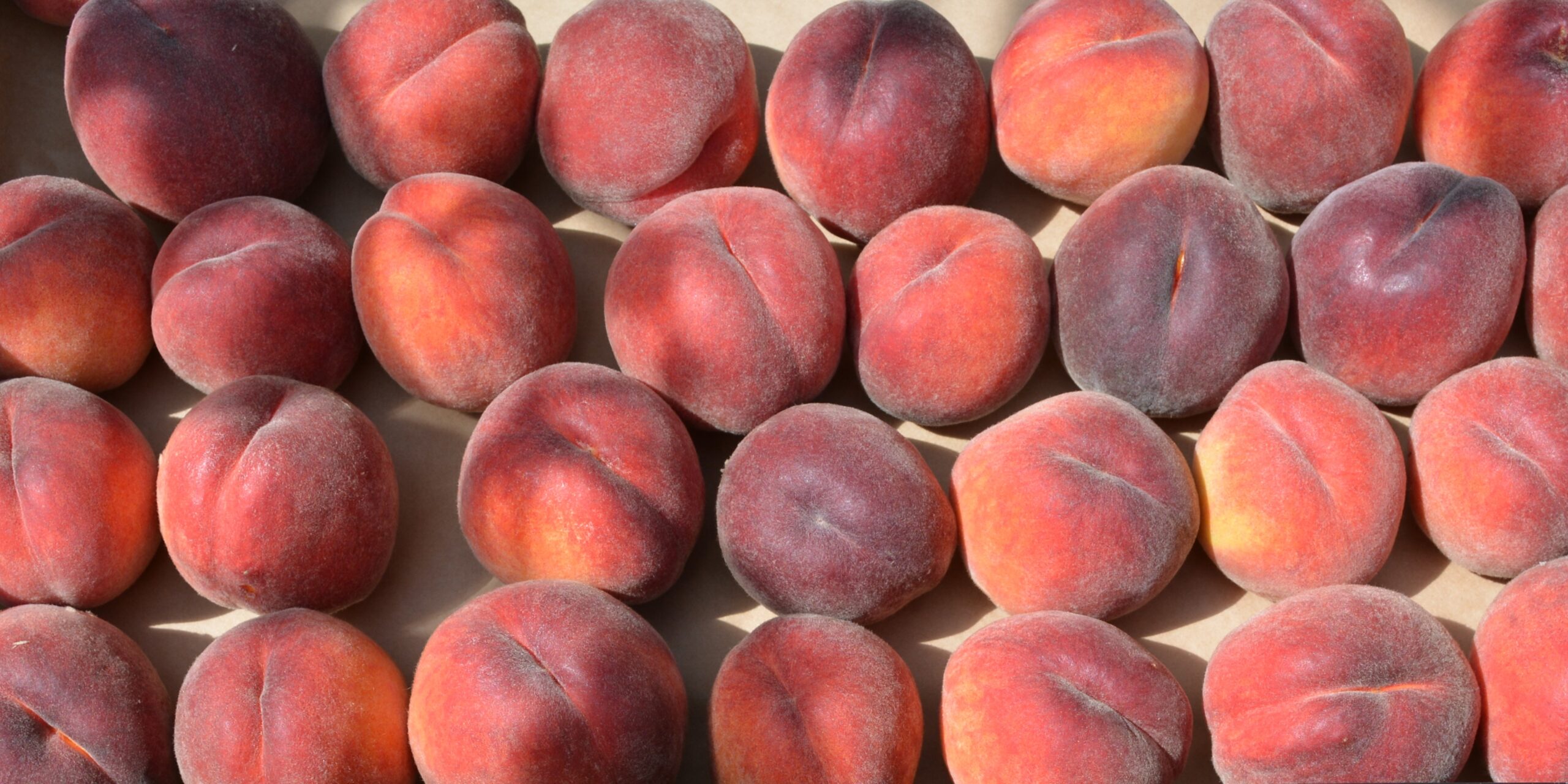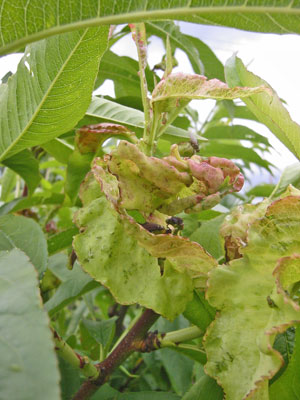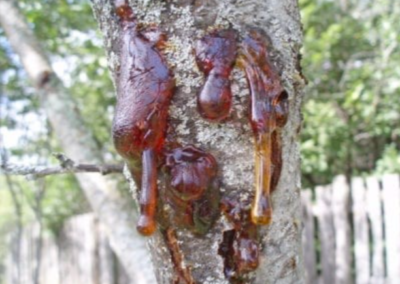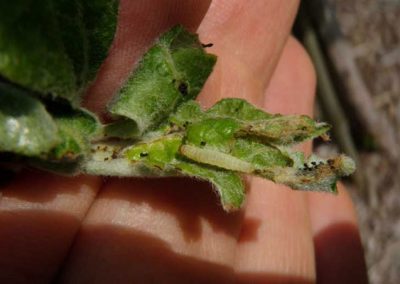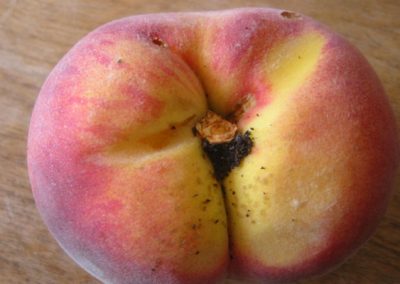Growing Peaches
If you are just getting started, check out our fruit trees 101 page for beginner tips and terminology.
Choose a site that is in full sun with well-drained soil. If the soil is heavy or poorly drained, build a raised mound 3′-4′ in diameter, 8″-10″ high. Peaches are best grown where there is a low chance of late frosts. If your site regularly gets hard frost in late April and early May, you may have trouble growing peaches. Late frost can mean blossoms are killed by low temperatures (28°F and lower) rather than setting fruit, and late frost can also increase the chances of bacterial canker by creating tissue damage that opens the trees up to infection.
Pollination and Rootstocks
Peaches are self-fertile.
plum, peach, & apricot rootstocks
LOVELL A peach rootstock similar in size to K-86. Well anchored, best on well drained soils, grows to 15′. Space 12’–15′ at planting.
ST. JULIAN A (SEMI-DWARF) Precocious and productive and well anchored. Grows to 12’–15′. Space 10’–14′.
KRYMSK 86 (SEMI-DWARF) Slightly larger than St. Julian A. Well anchored and tolerant of heavy soil. Grows to 15′. Space 12’–15′.
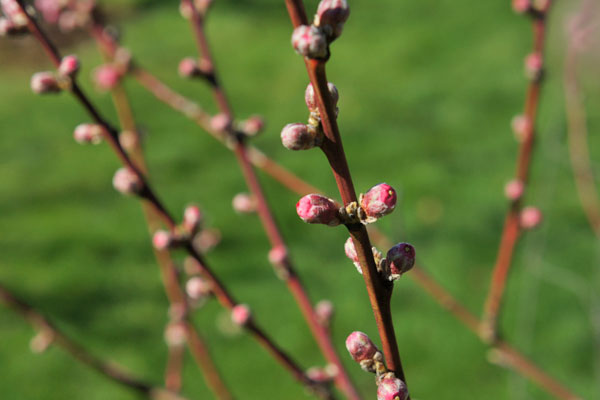
Pruning and Training
Peaches are pruned differently than all other fruit trees. Lots of young “brush” or branches are needed because peaches bear mainly on one-year-old wood. Pruning should be done during dry weather (48 hours of no rain after cuts are made) at or just after bloom in spring. The ideal pruning form for peaches is the Open Center form. The tree is kept narrow at the base and wider on top; vegetation is kept from growing in the center. The goal of pruning is to keep the center open, ensure proper light and air flow, and stimulate growth of strong young fruitful wood.
Establishing New Trees
For new trees, choose 3-4 evenly spaced branches to form the main trunks (right). Ideally, these branches should be growing out at a 45-degree angle. Remove all other branches and cut the remaining back to 12″-18″. Each year, these trunks will be headed back to retain the core structure and stimulate branching. The branches that grow from the trunks should be pruned each year to promote fruit quality.
Annual Pruning
Each Spring, prune to remove any dead, diseased, or damaged wood and branches that are crossing or growing into the center. Fruit is best supported on short branches rather than long flimsy ones that can easily break. Prune back branches with fruit buds (image below) to 4-6” to keep the branches short and the weight of the fruit close to the structure. For branches that have mostly leaf buds, prune back to 2-4 buds. Rather than letting them grow too far outward, pruning them back and allow them to produce shorter branches closer to the structure for next year.
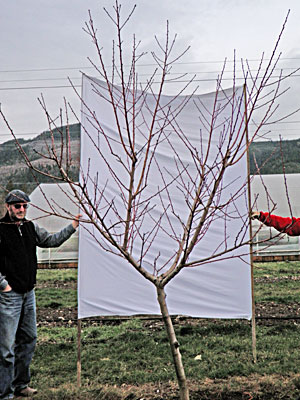
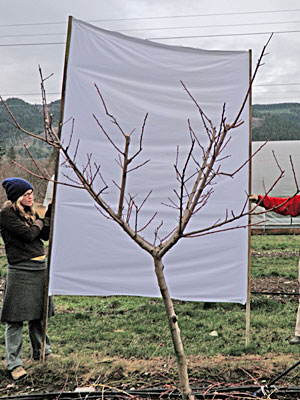
Fruit Management
In a good year, an established peach tree can set too many peaches. Some thinning of the fruit will be done by pruning, but further reducing the number of peaches on the tree will give you larger and higher quality of fruit. Pick off fruit as it starts to form leaving 6-8 inches between fruits. It is especially important to thin fruit that is crowding – fruit that is touching other fruit is more subject to brown rot. Always remove fruit at the end of branches to keep the branch from bending.
Harvest the fruit when it has changed color (background color is no longer green) and is fragrant but still hard. Allowing the fruit to soften on the tree leads to mealy or stringy texture. Allow the fruit to ripen off the tree at room temperature, or store in the refrigerator.
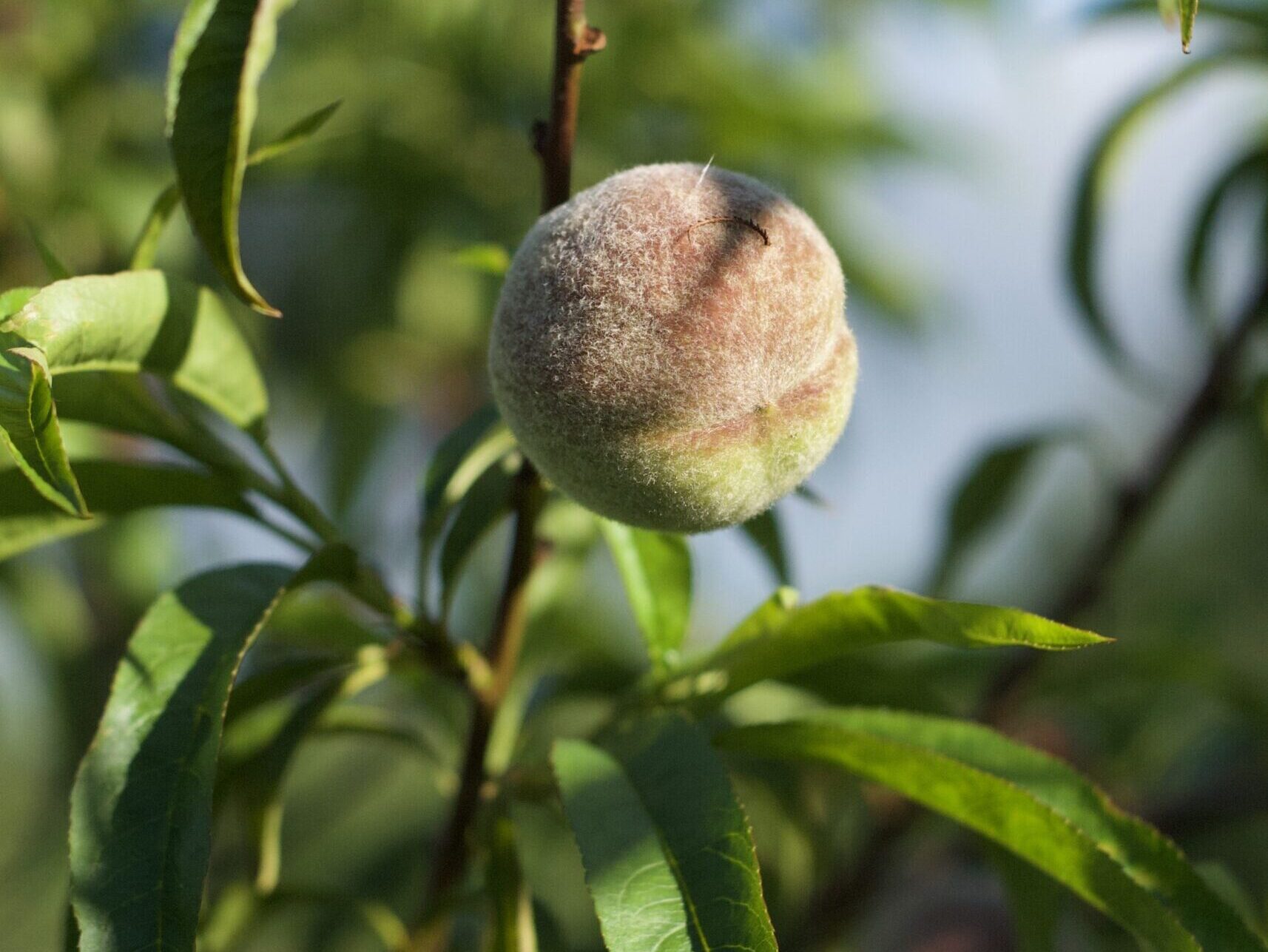
Peach Leaf Curl
A fungus that thrives in cool and wet conditions, Peach Leaf Curl is a common occurrence on the west side of the Cascades. Spores overwinter on bark and fallen leaves. Leaves on infected trees will emerge and turn yellow to reddish and deform and pucker as they develop. Infected leaves may drop, and the tree can die within a few years from repeated defoliation.
To prevent peach leaf curl, it is best to plant resistant varieties. All peach trees should be sprayed with sulfur or copper at bud swell (usually mid-January), again 3 weeks later, and again 3 weeks after that. Resistant varieties need spraying when young but become more resistance as they become established.
Bacterial Canker
This disease occurs when Pseudomonas syringae pv. Syringae bacterium infect plant tissues and multiply. The result is cankers that form in winter and spring on the branches that exude gum. Cankers that surround or “girdle” a branch can cause the branch to dieback.
To prevent bacterial canker, plant resistant varieties and make sure to continue proper pruning, watering, and fertilizing: a healthy tree is less susceptible to infection. If you see cankers, remove branches back below the canker and dispose. Copper sprays used to be recommended but has since been proven ineffective.
Leaf Roller
Leaf rollers can cause damage both to the foliage and to the young fruit on peach trees. The larvae feed on leaves and then pupate in a rolled leaf. A spray just as the buds break dormancy (also called the delayed dormant period) containing horticultural oil can smother overwintering eggs. Bacillus thuringiensis (Bt) sprayed during the growing season can also help control damage.
Earwigs
They usually don’t cause much damage to the trees themselves but can chew holes in ripe fruit and hide inside split pits. Earwigs climb up from the ground into the tree canopy at night. If you suspect earwigs, monitor for them by placing cardboard or similar material under the tree and checking for sheltering earwigs in the morning. Banding trees with plastic wrap covered in an adhesive can prevent them from doing damage.
Year in Review
Winter
- Begin copper/sulfur sprays for Peach Leaf Curl
Spring
- Prune during dry weather
- Spray horticultural oil for leaf roller if need
- Look for signs of Bacterial Canker and remove as needed
Summer
- Thin fruit as it develops
- Weed, water, and monitor for disease
- Harvest!
Fall
